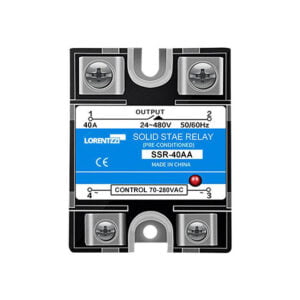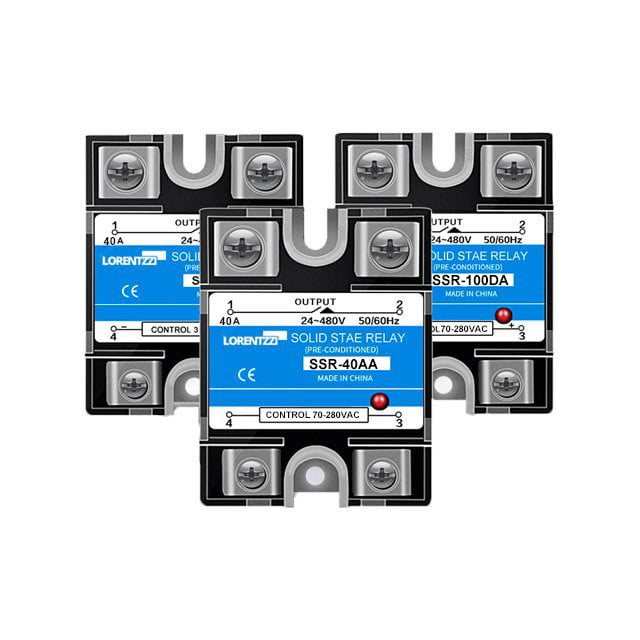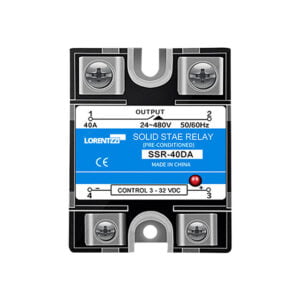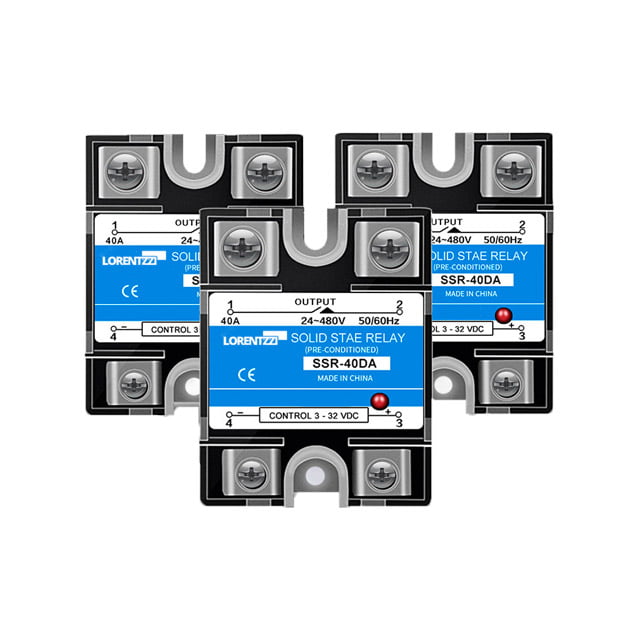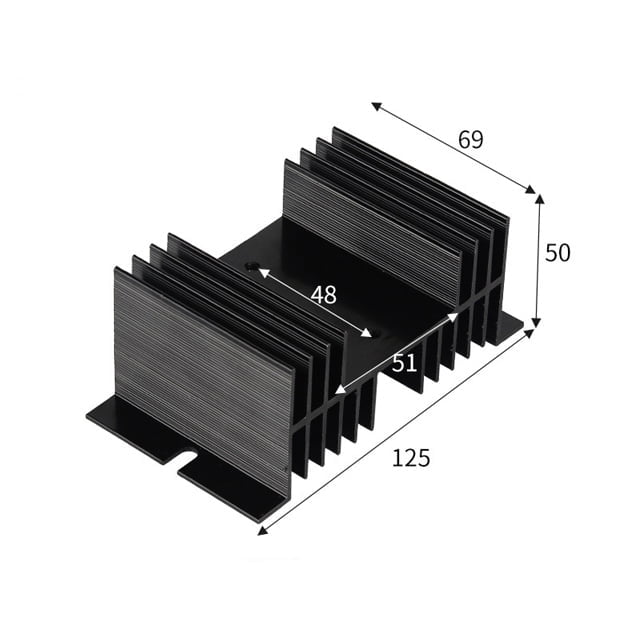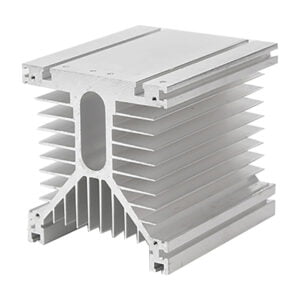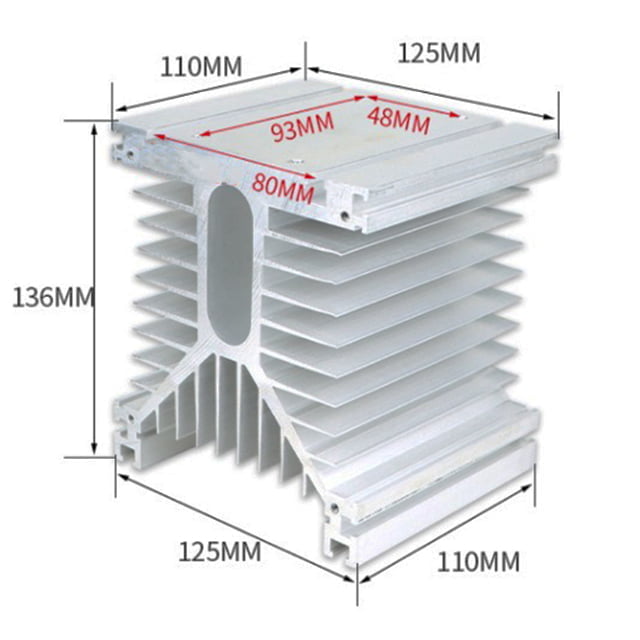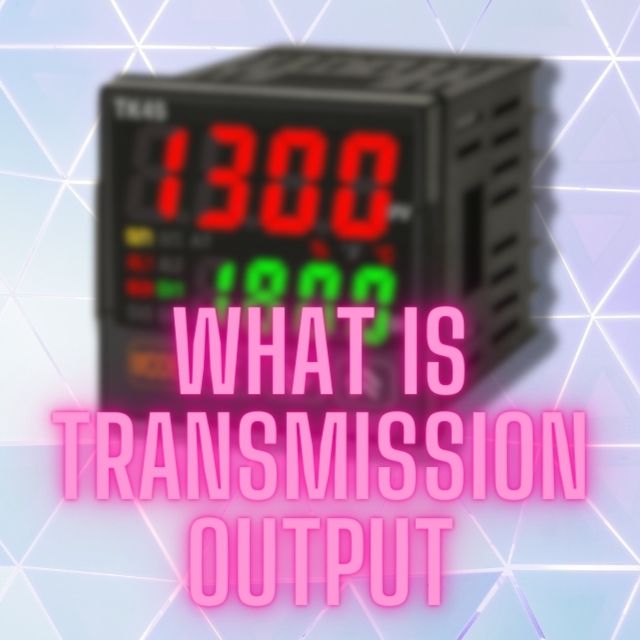Solid state relays may encounter problems such as overheating, overvoltage, and overcurrent during use. This article will provide you a comprehensive understanding of the causes and solutions to these problems. Let’s get started now!
Table of Contents
What Is A Solid State Relay?
-
DIN Rail Solid State Relay With Heatsink
Single phase solid state relay -
TSR 60DA 60 Amp 3 Phase SSR
Solid State Relay -
SSR 40AA, 40 Amps AC To AC Solid State Relay
Single phase solid state relay -
SSR-40DA Solid State Relay
Single phase solid state relay
Solid state relay is a new type of switch with no moving parts. Its working principle is that once a small voltage (generally DC3-32V or AC70-280V) is applied to its control terminal, the load terminal will be closed accordingly. Once the control voltage is removed, the load section is also turned off. It is mainly used as an actuator controlled by the temperature controller in the heating control system and can be used as a switch to control the start and stop of the motor. It is a good alternative to contactors or mechanical relays and has the advantages of fast switching times, no sparks, and no noise. If classified by phase, there are single-phase solid-state relays and three-phase solid-state relays. If divided according to different control methods, solid state relays can be DC AC type or AC AC type.
Solid State Relay Problems
Solid state relay is a semiconductor component with the advantages of sensitivity, reliability, safety, low noise, and no arc. However, due to limitations in their electrical performance and physical structure, solid-state relays may still be affected by problems such as
- Overheating,
- Overcurrent,
- Overvoltage.
The Reasons For SSR Overheating, Overcurrent And Overvoltage
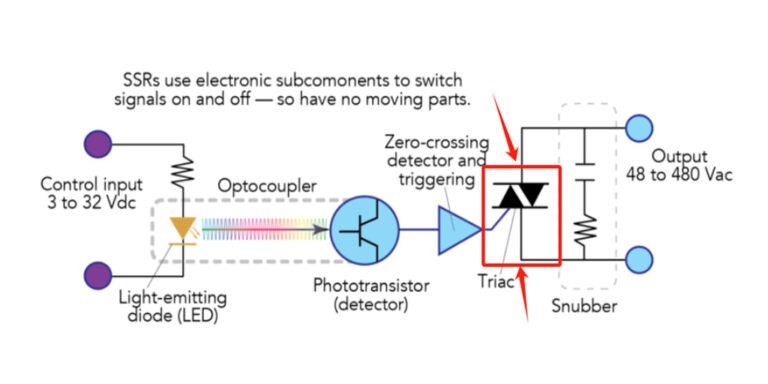
- Excessive load or short circuit: When the load is too large or a short circuit occurs, a large amount of current will flow through the solid-state relay. Excessive current will cause the internal components of the relay to be overloaded, leading to overheating and overcurrent.
- The input voltage is too high: If the input voltage exceeds the specified operating range of the solid-state relay, it will cause the internal components of the relay to be overloaded, causing overheating, overcurrent and other problems.
- Aging of relay components: After long-term use, the electronic components inside the solid-state relay will age, lose their original performance, and cause problems such as overheating and overcurrent.
- Poor cooling: If the heat dissipation of the solid-state relay is poor or the radiator accumulates too much dust, it will lead to overheating, overcurrent and other problems.
- Insufficient load capacity: If the load capacity of the solid-state relay is insufficient, it will cause current overload, resulting in overheating, overcurrent and other problems.
In short, there are many reasons for problems such as overheating, overcurrent, and overvoltage in solid-state relays. They need to be inspected and analyzed according to the specific situation, and appropriate repairs and improvements must be made.
Solutions For Solid State Relay Problems
Overheating: Overheating is usually caused by large power loss in the internal components of the relay. Therefore, when designing and using solid-state relays, you should pay close attention to the heat distribution of each part and take effective heat dissipation measures, such as adding heat sinks, ventilation holes, etc.
-
Heatsink With Cooling Fan For Solid State Relay
Accessories -
Din Rail Heat Sink D-74 For Single Phase SSR
Accessories -
Y-110 Heat Sink For Industrial SSR
Accessories
Overcurrent: Overcurrent is caused by the load current exceeding the rated current of the relay. In order to avoid overcurrent, when selecting a solid-state relay, the rated current value should be selected based on the actual current demand of the load, or an overcurrent protection circuit, such as a current limiting resistor, fuse, etc., should be added in front of the relay.
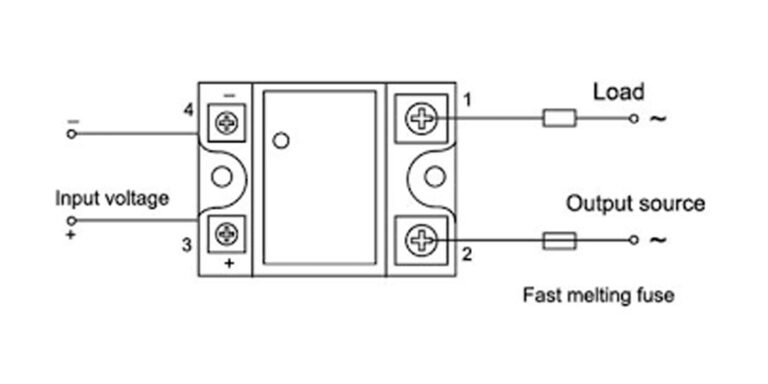
Overvoltage: Overvoltage is caused by the input or load terminal voltage of the relay exceeding the rated value. When selecting a solid state relay, one should choose one with the appropriate voltage rating based on the circuit needs. In addition, an overvoltage protection circuit, such as a varistor(Its working principle is when overvoltage enters the circuit, the varistor shows a very low resistance value to absorb the overvoltage.), can be added in front of the relay like below:
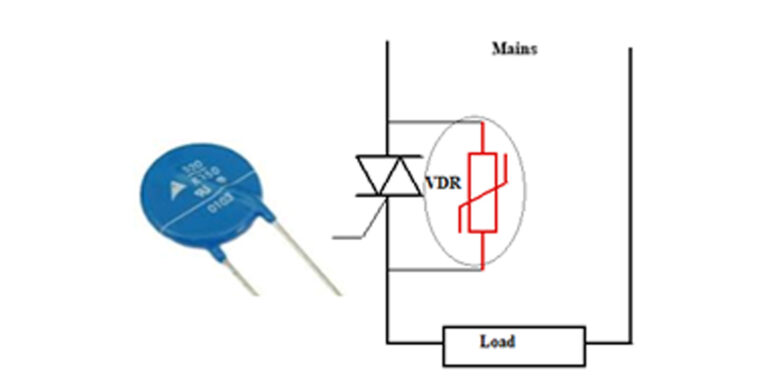
Conclusion
The above are common methods for dealing with overheating, overcurrent, and overvoltage problems in solid-state relays. During use, a suitable solution should be developed based on the actual situation and comprehensive consideration of various factors.





